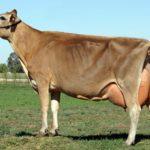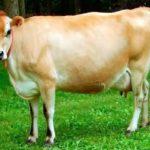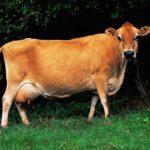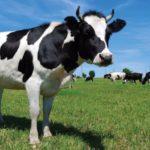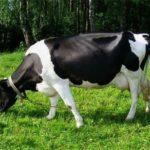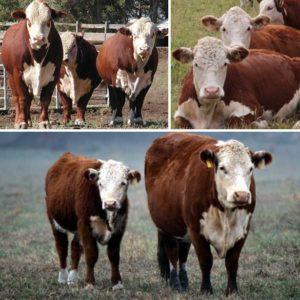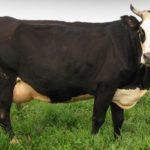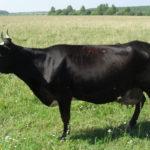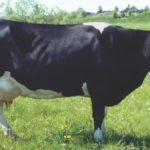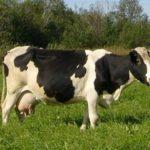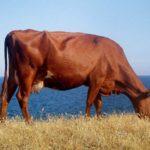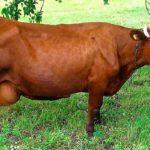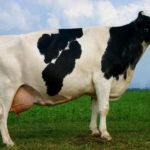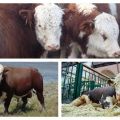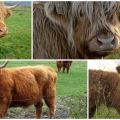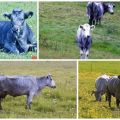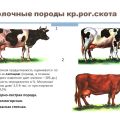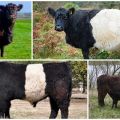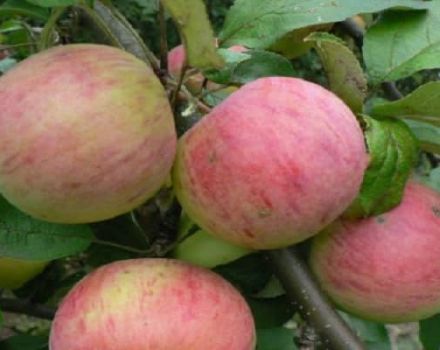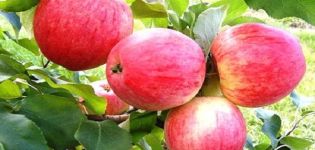Top 12 best and highest yielding dairy cows
The choice of livestock for a farm depends on the direction in which the person is going to work. Dairy cows are purchased if the owner of the livestock is interested in the production of milk and dairy products, since they hold the record for milk yield. A review of dairy cattle breeds will allow you to determine which cows should be started in your own backyard.
Features of the dairy direction
Dairy cows are distinguished by a calm disposition, graceful forms, and a developed digestive system. Muscles are less pronounced than in meat and meat and dairy breeds. Their main task is to produce large volumes of milk. To do this, they must receive a lot of succulent feed. The animals are unpretentious, they do not need large walking areas, the livestock does not scatter in the pasture.
A typical representative of the dairy direction is a cow, characterized by the highest adaptability to various types of milking machines, convenient in manual milking, a productive individual.
Fatty sour cream, delicious cottage cheese, butter - this is not a complete list of products that a small herd of dairy cattle and even one cow can constantly provide to the owners.
The amount of milk yield is influenced by:
- heredity;
- breed of animal;
- the age of the cow;
- quality of food and care.
Milk yield increases from 2 calving, reaches a maximum after 5, then, after 8 calving, begins to gradually decrease. A cow is considered old after 10 calves, some animals remain productive up to 13-15 years.
Important: it should be borne in mind that the quantity of products and their quality directly depend on the nutrition and living conditions of animals.
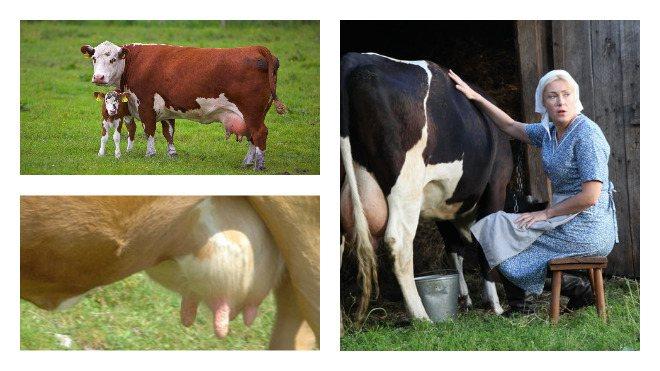
Dairy breeds include animals with tub-shaped and bowl-shaped udders, which have a minimum of adipose tissue.
Best breeds
Dairy and meat-and-dairy cows are kept in private farmsteads. The latter give less milk, but its fat content is higher, and more meat yield at slaughter. The list of the best includes dairy and universal types of cattle.
Jersey
Dairy cows with British roots. Bred in the 19th century. Heifers weigh 400-450 kilograms, bulls are larger, up to 750 kilograms. Daily milk yield - up to 30-32 liters of milk with a high (5-8%) fat content of the product.
These compact, abundant red-headed cows with a bowl-shaped udder are unpretentious in keeping, easily adapt to heat and cold.
Ayrshirskaya
Scottish dairy cows. The animals are hardy, stocky, red-red with white spots. Heifers - up to 500 kilograms, bulls - up to 800. They tolerate frost perfectly, are unpretentious in keeping, and are resistant to diseases. Productivity characteristic:
- milk yield - 7000-10000 liters of milk per year;
- fat content of milk - 4-4.8%;
- meat yield - 50%.
Popular in Finland, Russia. These cows live up to 20 years while maintaining productivity.

The heifer is covered at 1.5-1.7 years. Cows calve easily, ideal for machine milking. The breed is popular in the Novgorod region, northern regions of Russia.
Black and white cows
Representatives of the domestic breed. Animals with a powerful physique and black and white skin color. There are 3 subspecies of the breed, depending on the region of maintenance: Ural, Siberian, Central. Heifers weigh 600-650 kilograms, bulls - up to 1 ton. Milk yield - from 3500 to 8000 liters per year.
High-yielding black-and-white cows are the most common in Russia. Calves are active, strong, with excellent survival rate.
Simmental
The oldest representatives of the breeds of meat and dairy direction, originally from Switzerland. Stocky animals with a large head. The color is light red with white spots. The weight of heifers is 600-650 kilograms, of bulls - 800-1000 kilograms. When choosing a milk simmental, you should pay attention to the size and shape of the udder. It should be large with prominent veins and smooth, wide-set nipples. Milk yield is about 5000 liters of milk per year.
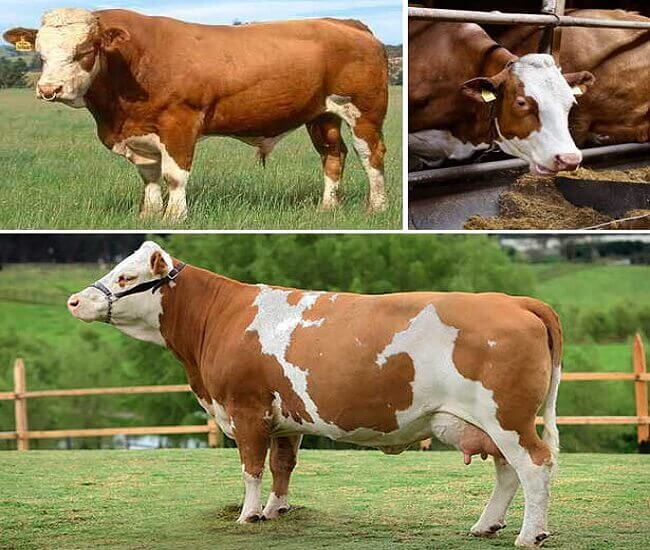
Under poor conditions, the breed is prone to degeneration. Mastitis develops if care and milking errors occur.
Yaroslavl breed
Large animals of black color with white spots on the face, around the eyes, on the belly. Cattle of the Yaroslavl breed are bred to produce milk. Milk yield is from 3000 to 5500 liters per year. Milk with excellent taste and fat content of 4-4.3%.
Yaroslavl cows are common in different regions. The animals are easy to acquire. They are adapted to Russian weather conditions.
Kholmogory cows
A large, versatile milk cow producing 4000-6000 liters of milk per year. The color is black with white spots, black and red with white individuals are rarely found. Bred in the 19th century in the Arkhangelsk province. A distinctive feature is the crooked legs of animals. Heifers weigh up to 600 kilograms, bulls weigh 1000-1100 kilograms. Bred in the Non-Black Earth Region and in the northern regions.
Due to their impressive size, animals need spacious stalls. Special attention should be paid to the legs; hoof joints are often inflamed in the hills.
Dutch
The oldest dairy breed of cows. From crossing these animals with local breeds, they got Kholmogorki, Yaroslavl and black-and-white breeds. The animals are large, with a proportional constitution, high milk and meat productivity. Annual milk yield is up to 5000 liters. The meat yield is 55-60%. Heifers weigh about 600 kilograms, bulls - up to 900 kilograms. The animals are white with large black spots. A distinctive feature is the white belt along the body in the area of the shoulder blades.

Dutch cows are considered one of the best dairy breeds in the world. Dutch cattle are bred in many countries.
Finnish breed
Dairy productive cows. The number in Finland is 1% of the country's total livestock. Milk yield - 6000-6500 liters per year, milk with a fat content of 4.4%.
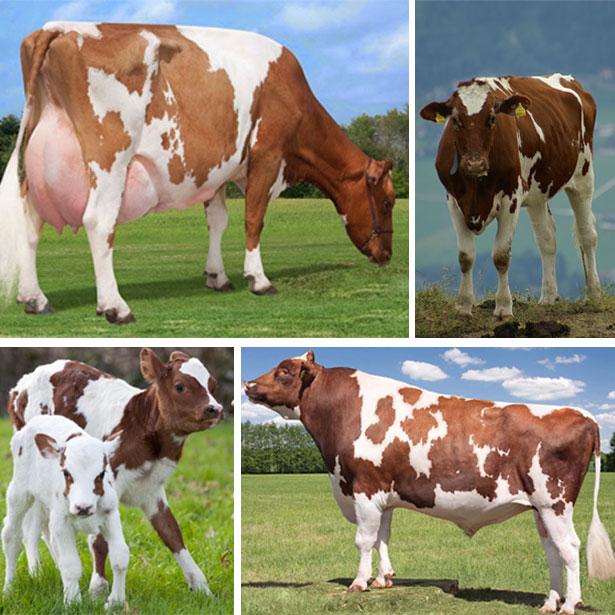
Brown Latvian
Compact dairy animals make up 90% of the dairy cattle population in Latvia. Skin of various shades of brown. Modern cows produce 4500-5000 liters of milk per year, with a fat content of 4.4%.
The biggest disadvantage of the breed is a congenital predisposition to leukemia. Animals should be carefully selected and purchased from trusted producers.
Tagil subspecies
Meat and dairy cattle breed. Most common in the Urals. Derived from crossing local animals with Kholmogory and Dutch breeds. The weight of heifers is 450-600 kilograms, depending on heredity, bulls are 800-1200 kilograms. Delicious meat, high quality milk.
The milk yield of cows depends on the nutrition during the growing up period. A cow gives more milk if it is well fed from childhood. Animals are consistently productive up to 15 years.
Red steppe
A breed of cows typical for southern warm regions. Large animals with a uniform red-brown color. Weight of heifers - up to 500 kg, bulls - up to 900. Indicators of productivity - 4000 liters of milk per year. With quality care, it reaches 5000.

Animals of the red steppe breed are unpretentious, they need walking and active movement so that the livestock does not stagnate.
Holstein subspecies
Large animals of black and white color. Red-and-white cows are rare. Milk yield - up to 8500 liters per year, sharply increases in warm climates. The fat content of milk is 3.7%.
Milking animals of the Holstein subspecies are bred in the southern and central regions, used to obtain meat and milk.
Comparative analysis of the performance of dairy cows
When choosing animals for your own backyard or farm, you need to pay attention to the shape and condition of the udder, performance indicators, and the appearance of cows.
| Breed of dairy cows | The amount of milk per year in liters | Fat content of the product |
| Ayrshirskaya | 7000-10000 | 4-4,8 % |
| Jersey | 4000-4500 | 6-8%, up to 9% |
| Finnish | 6000-6500 | 4,40 % |
| Kholmogorskaya | 4000-6000 | 3,90 % |
| Dutch | 5000 | 4,10 % |
| Black and white | 5000-8000 | 3.7% goes up to 4% |
| Simmental | 5000 | About 4% |
| Brown Latvian | 4500-5000 | 4,40 % |
| Yaroslavl | 3000-5500 | 4,40 % |
| Red steppe | 4000 | 3,5-3,8 % |
| Tagilskaya | 3500-4000 | 4- 4,2 % |
| Holstein | 7000-8500 | 3,70 % |
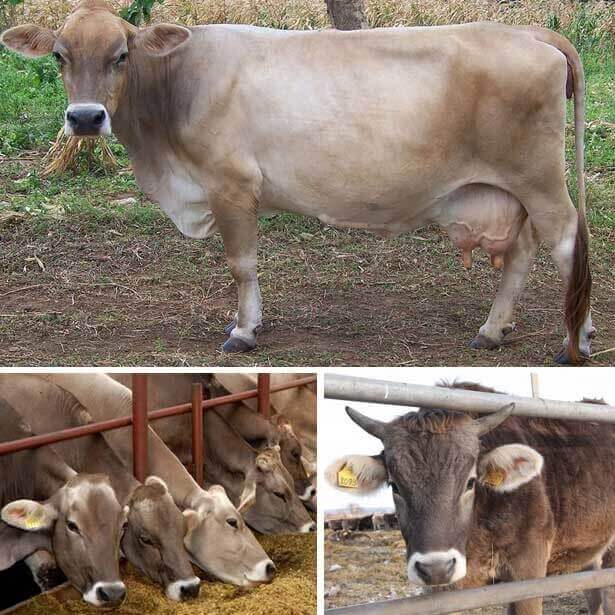
The Jersey breed took the lead thanks to the high fat content of milk. It is used for the production of cheese and cream. The Finnish breed is difficult to acquire, there are few such cows even in their homeland - in Finland.
What breed is better to choose
When choosing a cow, you should take into account the weather conditions in the region. Pay attention to the condition of the udder, gait, hooves of the animal. You should buy thoroughbred animals from trusted producers who are ready to provide documents for the livestock. Animals must be vaccinated.
Of course, the selection of a thoroughbred productive livestock is a complex and costly business. However, the costs quickly pay off, animals, with proper care, bring high profits. The profitability of dairy production is one of the highest among various livestock industries.
